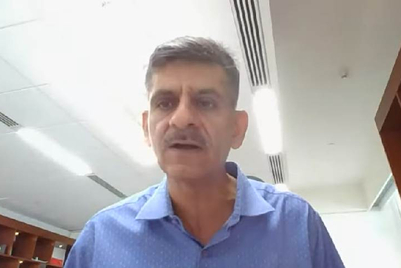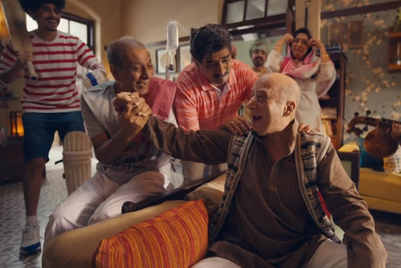ITC’s Hemant Mailk laid down the mantras for brand building in ‘changing India’ on day one of Goafest 2017.
He began his session by carefully describing the wordings of the topic at the Industry Conclave at the festival.
He said, “When I was given the topic, ‘role of brands in changing India’, I wondered whether it was about ‘changing India’ or ‘changing’ India. I’ve gone with ‘changing India’.”
Transformation from hierarchical collectivists to individuals
Among what he believes is changing in India, were two points about women getting more prominent, with a lady becoming a provider and the mother a decision maker. He also spoke about how youth culture is changing.
He said, “Change is a part of our transformation from hierarchical collectivists to individuals. And we are seeing this with the emergence of stars in sports that are focused on individuals (Badminton, tennis etc) and also the start-up culture right now. Changing government policies have helped strengthen our economy too.”
Consumer trends
Malik then listed a few ‘exciting consumer trends’ that have come to the fore recently.
A) Busy lives
Consumers are seeking out products and services that help facilitate this busy lifestyle or those that free up time on less enjoyable tasks.
B) Personal space and time
Consumers are seeking out products that offer moments of comfort and encourage them to step back from the pressures of life.
C) Health living
Consumers are becoming increasingly skeptical of product claims.
D) Value worthiness
Consumers becoming more discerning and showing willingness to trade-up or even trade-down in they find an alternative offering more value for money.
E) Experience seeking
Consumers are seeking products that are novel and unusual. This extends to even when buying everyday groceries.
F) Young urban creatives
Consumers are breaking traditional life-cycle patters because of more liberal mindsets and greater opportunities and seeking out products that help this.
G) Changing age structures
Consumers are changing attitudes that defy stereotypes or actively seeking products that reflect their beliefs.
Malik had a rider though after discussing these points, that there could be a contradicting trend for each of the above points that need to be looked out for.
Pillars of brand building
The divisional chief executive of ITC’s foods business then spoke about the pillars of brand building. He warned those that communication is just one pillar of brand building and brought out the importance of supply chain, product differentiation and being topical with case studies for three of ITC’s brands – Aashirvaad Atta, Yippee Noodles and Bingo.
Aashirvaad saw two consumer problems. One was inconsistent wheat quality
The brand solved this by first using ITC’s e-choupal network to source the best grains directly from farmers. It then used superior blending capabilities to ensure a consistent mix. It then used crop holding to ensure consistency of blend across crop areas and crop year.
The other problem it saw was that consumers wanted their atta fresh.
The solution for this was centres of productions closer to centres of consumption as it looked beyond the obvious supply chain process to reduce time to market.
For Yippee, ITC had a problem of late entrance to the instant noodles market. Here the brand innovated by changing the shape of the product, get rid of stickiness and then added a customised flavor to the noodles. Three years and 1,300 block trails led to ‘non sticky noodles’. It added dehydrated vegetables (since mothers wanted to add them to their children’s meals) and also added a distinctive smell of Indian masala.
With Bingo, the company wanted to cater to the youth. It perceived ‘now’ to be a key word for its TG and hence tried staying relevant. The latest of this attempt came through a TVC which took on selfies.
Mantras for brand building
Stating that their’s no amrit (magic) for building a great brand he urged the industry to ‘clearly define a role of the brand’.
He stated a few questions for the brand builders:
• Are you clear on what the brand stands for?
• Are you speaking to the right consumer?
• Are you providing with what he/she needs?
• Are you utilising every opportunity in the supply chain?
• Are your products relevant now and future ready?
Keeping all these questions in mind he added that the brand builders should at the same time also look to build profitability.
Patanjali
Patanjali’s CEO, Acharya Balakrishna was due to have his own session at the festival post Malik’s talk. A member from the audience asked Malik whether Patanjali has eaten into his company’s profits.
Malik’s reply, “Patanjali has eaten into everyone’s profits and shows how one brand can enter many categories. It’s a great competitor to have. But, categories we operate in our still small and have the potential to grow a lot.”




.jpg&h=334&w=500&q=100&v=20250320&c=1)
.jpg&h=334&w=500&q=100&v=20250320&c=1)


.jpg&h=334&w=500&q=100&v=20250320&c=1)

.jpg&h=334&w=500&q=100&v=20250320&c=1)


.jpg&h=334&w=500&q=100&v=20250320&c=1)




.jpg&h=268&w=401&q=100&v=20250320&c=1)
.png&h=268&w=401&q=100&v=20250320&c=1)


